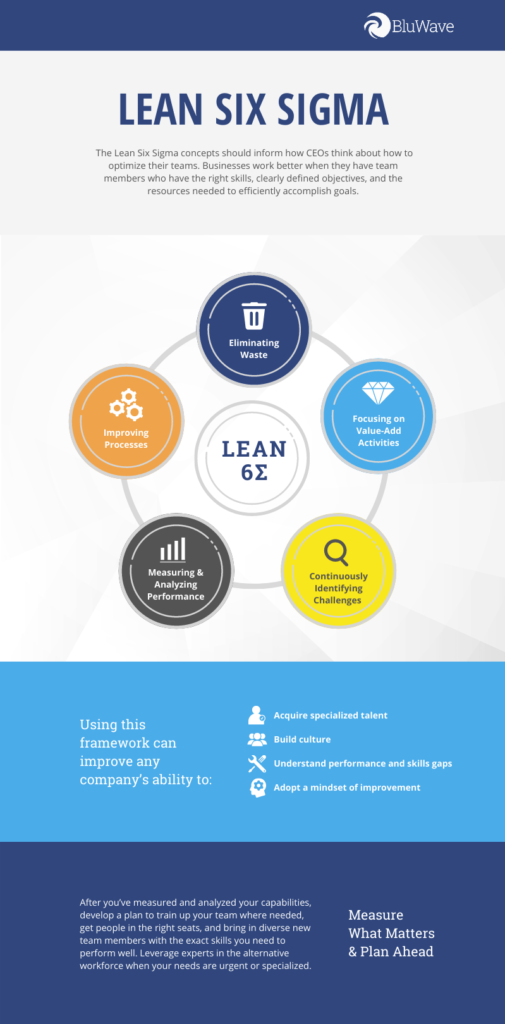
A PE fund principal came to us with an immediate need for a strategy session facilitator for their software portfolio company. Having recently acquired the business, the fund wanted to quickly get the portco into strategy sessions so that they could start defining long-term goals. Needing structure for these sessions, they were looking for a facilitator that was a former executive or management consultant and had software industry experience. They immediately needed someone to remotely lead the session and help the portco form and prioritize goals. We promptly worked to understand the nuances of their need and then leveraged our data and human ingenuity to match them with two select strategy session facilitators. The client selected their ideal choice and was so pleased that they have continued to use this resource across their entire portfolio.
Read the full case study.
Have a strategy need we can help with? Contact us here.

A PE fund came to us with a critical need for an ERP selection consultant for their portco in the manufacturing industry. Since acquiring the portco, they knew that the company’s older ERP system would need to be replaced. Knowing that the selection and implementation would be a lengthy process, they were urgently seeking a consultant with experience in the manufacturing industry at the same scale as the portco that could guide them through what needed to be evaluated before making a selection and then manage the entire process. After quickly understanding the key needs of our client, we were able to match them to a curated couple of ERP selection consultants in our network within 24 hours. Selecting their ideal choice, the client was able to quickly and confidently kick off their ERP selection process.
Read the full case study here. Have a similar need that you would like to connect with us on? Contact us here and a team member will be happy to begin helping you within 24 hours.

Firm urgently needs consultant for ERP selection
A PE firm came to us with a critical need for an ERP selection consultant for their portco in the manufacturing industry. Since acquiring the portco, they knew that the company’s older ERP system would need to be replaced. Knowing that the selection and implementation would be a lengthy process, they were urgently seeking a consultant with experience in the manufacturing industry at the same scale as the portco that could guide them through what needed to be evaluated before making a selection and then manage the entire process.
BluWave identifies best-fit provider
Leveraging our founder’s 20 years in private equity, we have extensive frameworks for assessing PE-grade ERP selection needs. BluWave utilizes technology, data, and human ingenuity to pre-map, assess, monitor, and maintain deep pools of providers that uniquely meet the private equity standard. We interviewed the PE firm to understand their specific key criteria, and then connected the client with three select pre-vetted consulting firms from our invitation-only Intelligent Network that fit their exact needs.
Firm engages provider to aid with ERP selection and implementation
Within 24 hours of the initial scoping call, the PE firm and portfolio company were introduced to the PE-grade ERP selection consulting firms that specialized in the manufacturing industry. The client selected their ideal choice. The PE firm was able to confidently drive an excellent outcome without wasting time and cost and the portfolio company was able to quickly kick off their ERP selection process.

In a recent article for CEOWorld Magazine, BluWave founder and CEO Sean Mooney shared how his love for the beautiful, streamlined, and seemingly perfect Ferrari sports cars that constantly improved with each model led to his love for the concept of Lean Six Sigma. He saw a similar sense of beauty in the ideas of perfecting form, reducing variability, eliminating waste, and continuously seeking improvement.
While the concept was first embraced by the manufacturing industry, it is becoming increasingly popular across all sectors and industries, even in how business leaders think about their people.
You can read the full article and Sean’s thoughts on how Lean Six Sigma is all about people here. And if you need help connecting to the fractional and interim resources you need when you need them in order to apply Lean Six Sigma in your business, you can contact us here.


Prep for sale resource needed for healthcare tech portco
A PE firm came to us with a critical need for an independent prep for sale resource for their healthcare technology company. Ready to sell their portco, they were looking for an interim controller that could come in and manage the book closing as well as the influx of requests that would occur during the sales process. They immediately needed a resource that had been through a PE sales process before that could come in early and stay with them for 3 to 6 months until the firm closed the sale of this portco.
BluWave identifies top providers with industry specific expertise
Leveraging our founder’s 20 years in private equity, we have extensive frameworks for assessing PE-grade prep for sale needs. BluWave utilizes technology, data, and human ingenuity to pre-map, assess, monitor, and maintain deep pools of independent interim controllers that uniquely meet the private equity standard. We interviewed the PE firm to understand their specific key criteria, and then connected the client with the select pre-vetted interim controller from our invitation-only Intelligent Network that fit their exact needs.
Firm engages provider and begins prep for sale process
Within 48 hours of the initial scoping call, the PE firm and portfolio company were introduced to an experienced PE-grade financial consultant who specialized in preparing companies for sale. The PE firm engaged with the consultant and was able to confidently begin the sale prep process while also providing the portco with the support they needed to prepare all the items needed for a successful sale.

VP of Operations urgently needed to take charge at bakery portco
A PE firm came to us with a critical need for an executive recruiting firm that could place a VP of Operations in their bakery portfolio company. Since buying a second bakery as an add-on to their original portco, they urgently needed someone that could take the reigns, keep operations running smoothly, and implement minor process changes as the add-on adjusted to being part of the firm’s existing bakery portco. They were looking for a recruiting firm that could connect them with a person that had both operations and bakery experience and was also local to the geographic area.
BluWave assess needs and identifies top executive recruiting firm
Leveraging our founder’s 20 years in private equity, we have extensive frameworks for assessing PE-grade recruiting needs. BluWave utilizes technology, data, and human ingenuity to pre-map, assess, monitor, and maintain deep pools of recruiting firms that uniquely meet the private equity standard. We interviewed the PE firm to understand their specific key criteria, and then connected the client with the select pre-vetted executive recruiting firm from our invitation-only Intelligent Network that fit their exact needs.
Client engages provider and quickly begins recruiting search
Within 48 hours of the initial scoping call, the PE firm and portfolio company were introduced to a PE-grade recruiting firm that specialized in recruiting executives for the food and beverage industry. The PE firm engaged with them and was able to confidently and quickly begin their VP of Operations search. The firm liked the recruiter so much that they also engaged them for their R&D Chef search.

Firm vitally needs integration support for ecommerce portco
A PE firm came to us with a critical need for post-merger integration support for their ecommerce portfolio company. Since investing in the company, M&A was part of the strategy but the company had no experience in executing or managing the post-merger integration process. They immediately needed post-merger integration support as they were in the process of acquiring another website that was a duplicate company they planned to merge with the existing portfolio company.
BluWave identifies exact-fit merger integration provider in network
Leveraging our founder’s 20 years in private equity, we have extensive frameworks for assessing PE-grade post-merger integration needs. BluWave utilizes technology, data, and human ingenuity to pre-map, assess, monitor, and maintain deep pools of merger integration resources that uniquely meet the private equity standard. We interviewed the PE firm to understand their specific key criteria and then connected the client with two select pre-vetted groups that specialized in integration and ecommerce from our invitation-only Intelligent Network that fit their exact needs.
Firm engages ideal provider to execute integration
Within 48 hours of the initial scoping call, the PE firm and portfolio company were introduced to the two exact-fit e-commerce integration resources that we identified for them. The client selected their ideal choice. The PE firm was able to confidently drive an excellent outcome without wasting time and opportunity cost and quickly execute their merger integration goals for the portfolio company.

PE Firm needs digital marketing expert for food manufacturing target
A middle-market PE firm came to us with a critical need for digital marketing expertise for a snack food manufacturing company they had an LOI with. Knowing that digital marketing was going to play a key role in their go-to-market strategy, they urgently needed a PE-grade digital marketing expert who had proven expertise in the industry to come in and take their digital marketing to the next level, with the ultimate goal of helping the company grow post-close.
BluWave uses pre-vetted network to identify exact-fit providers
Leveraging our founder’s 20 years in private equity, we have extensive frameworks for assessing PE-grade digital marketing needs. BluWave utilizes technology, data, and human ingenuity to pre-map, assess, monitor, and maintain deep pools of digital marketing resources that uniquely meet the private equity standard. We interviewed the PE firm to understand their specific key criteria, and then connected the client with select pre-vetted digital marketing agencies from our invitation-only Intelligent Network that fit their exact needs.
Firm engages ideal, PE-grade digital marketing expert
Within 24 hours of the initial scoping call, the PE firm and portfolio company were introduced to two PE-grade digital marketing agencies that specialized in the food and beverage space. The client selected their ideal choice. The PE firm was able to confidently drive an excellent outcome without wasting time and opportunity cost and the portfolio company was able to quickly fill this critical need and execute their aggressive growth strategies post-close.
Post-merger integration needed for healthcare portco
A PE firm vice president of portfolio operations came to us with a critical need for post-merger integration support for their healthcare services company. They were five months into the value creation plan for the portco and were in the process of due diligence for an add-on that had a high chance of being executed. They urgently needed someone to come in and lead the post-merger integration efforts at the portco that had healthcare services experience, specifically in the benefits market.
BluWave identifies pre-vetted, PE-grade provider with industry background
Leveraging our founder’s 20 years in private equity, we have extensive frameworks for assessing PE-grade post-merger integration needs. BluWave utilizes technology, data, and human ingenuity to pre-map, assess, monitor, and maintain deep pools of merger integration resources that uniquely meet the private equity standard. We interviewed the PE firm to understand their specific key criteria and then connected the client with a select prevetted post-merger integration group that fit their exact needs.
PE firm introduced to exact-fit post-merger integration support provider
Within 48 hours of the initial scoping call, the PE firm and portfolio company were introduced to the exact-fit match and were so pleased that they decided to quickly engage with them. The PE firm was able to confidently drive an excellent outcome without wasting time and opportunity cost, and the PE firm was able to promptly execute their merger integration goals for their portco.

Firm needs interim CHRO for multi-site portco
A PE firm came to us with a critical need for a head of HR for their multi-location healthcare services company. With the current head of HR leaving and an ineffective HR department, the healthcare services company needed a strong HR leader with role and industry expertise to come in and restructure the entire system in 3-6 months. Already with ~1000 employees and additional acquisitions on the horizon, they urgently needed a local interim CHRO leader that could be boots on the ground in HQ during the pandemic in order to quickly spearhead change.
BluWave presents PE-grade interim executives with industry expertise
Leveraging our founder’s 20 years in private equity, we have extensive frameworks for assessing PE-grade interim CHRO needs. BluWave utilizes technology, data, and human ingenuity to pre-map, assess, monitor, and maintain deep pools of experienced HR leaders that uniquely meet the private equity standard. We interviewed the PE firm to understand their specific key criteria, and then connected the client with the select pre-vetted interim CHRO candidates from our invitation-only Intelligent Network that fit their exact needs.
Firm selects top choice to serve as interim CHRO
Quickly after the initial scoping call, the PE firm and portfolio company were introduced to four PE-grade interim CHRO candidates that specialized in healthcare services. The client selected their ideal choice, allowing them to quickly retain this critical role without wasting time or cost. The candidate ended up being such a great fit thanks to their background in M&A, PE, and healthcare, that they were flipped to the organization’s permanent position after only three months of serving as an interim resource.

Firm has immediate need for PE-grade interim CFO
A PE firm came to us with an immediate need for an interim CFO for their automotive aftermarket company. With the existing CFO transitioning out within two weeks after an abrupt resignation, they needed to act fast to find a replacement. Not having the time to sift through candidates, they critically needed a candidate from a focused set of referenced, PE-grade interim CFOs that understood the automotive aftermarket and the nuances to the complex accounting and financials associated with this type of organization.
BluWave connects firm with in-network, pre-vetted interim executives
Leveraging our founder’s 20 years in private equity, we have extensive frameworks for assessing PE-grade interim CFO needs. BluWave utilizes technology, data and human ingenuity to pre-map, assess, monitor, and maintain deep pools of interim CFOs that uniquely meet the private equity standard. We interviewed the PE firm to understand their specific key criteria, and then connected the client with three select pre-vetted candidates from our invitation-only Intelligent Network that fit their exact needs.
Firm engages their top choice to fill the role
Within 24 hours of the initial scoping call, the PE firm and portfolio company were introduced to the first candidate that had CFO experience in the automotive aftermarket industry. After a series of interviews, the client selected their ideal choice that was able to start immediately and was open to converting to a full-time role. Because the candidate was such a perfect fit, the PE firm decided to convert them to full-time from the get-go. They were able to drive an excellent outcome by quickly retaining this role without wasting time or cost.

A PE firm came to us with a critical need for a pricing strategy expert to maximize revenue at one of their consumer products portfolio companies. Since competing against big-box retailers, the portco realized their need to set pricing that clearly conveyed the value of their offerings to their price-conscious and value-driven consumers. We quickly worked to understand the client’s nuanced needs, leading us to promptly introduce them to two PE-grade pricing strategy experts with extensive experience in the consumer products industry. The client selected their ideal choice, and the PE fund was able to achieve its objective of maximizing response rates and demand through strategic pricing and an aggressive seasonal promotional schedule.
Do you have a similar need or any other specific need we can help you with? Contact us here and we will be happy to help you.
Read the full story here.










